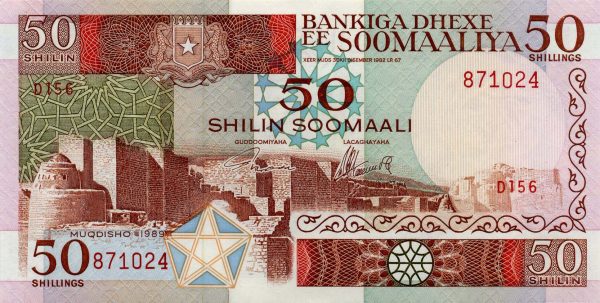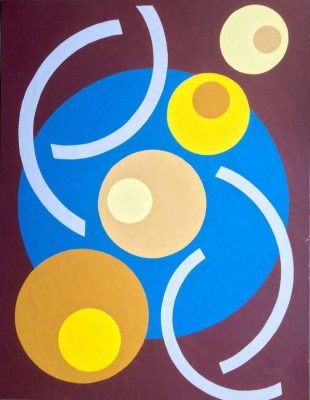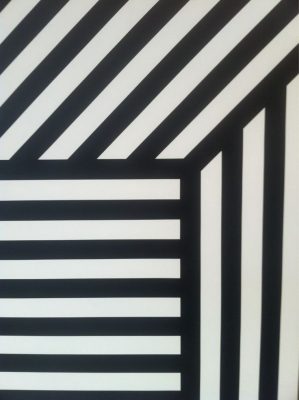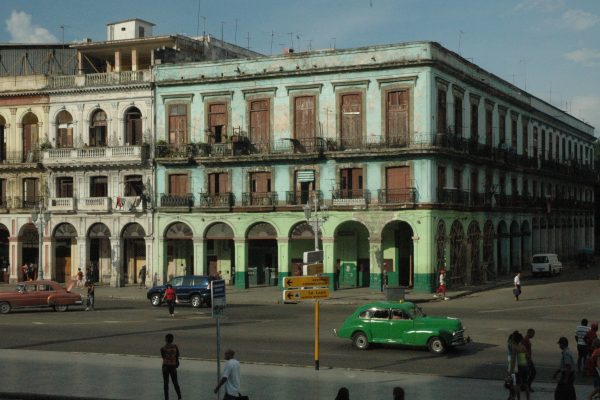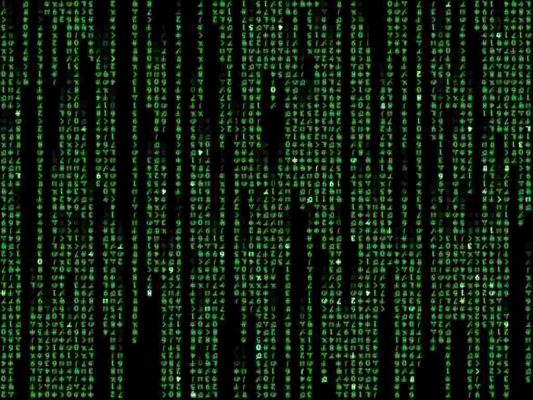On a traffic island in the middle of Somaliland’s capital city, Hargeisa, is the rusting shell of fighter jet shot down in 1988. It stands on a brick platform above a colourful mural depicting a man hoisting the national flag and a woman carrying a baby on her back, surrounded by scenes of death and violence. Around the base of the monument a whirlwind of dust and confusion is whipped up by traffic, crowds, and mobile phone chatter and construction noise. Advertising boards vie for attention with the market traders; goats feed on discarded vegetables; men rush to afternoon prayers. The air is thick with Radio Hargeisa, blasted from the tiny mud hut cafes that line the streets. A girl in a blue hijab makes her way through the crowds. Though the scars of the civil war that destroyed the country are still visible, Hargeisa is today an energising and vibrant city.
Somaliland is a breakaway territory in the northwest of Somalia, internationally recognised as an autonomous region. Over the past twenty years Somaliland has been building a democratic state, pursuing a process of political and economic reconstruction that has brought security and relative stability since it unilaterally declared independence from Somalia in 1991. Somaliland today has its own currency, car registration numbers and even biometric passports, and is pushing hard to be recognised as an independent nation.
I am making my way back to the house my family and I fled as refugees in 1988, before starting a new life in London seven years later. It’s my first trip back to Somaliland. My driver Hassan is a forty-something former soldier who now earns a living by renting out the second-hand Land Rover he bought with the 2,000 dollars sent to him by his brother in Sweden. He tells me about his aunt and her family, who were among the estimated fifty thousand people killed during the air strikes of 1988. Like many of the men in this city, he incessantly chews khat, a plant containing an amphetamine-like stimulant which is said to cause excitement and euphoria.
As he dodges the cracks and pot holes in a road built in the 1950s he passes dozens of minimansions built by expatriates who have now returned to this former British Protectorate. Somaliland gained independence from Britain in 1960 and joined with its neighbour, previously known as Italian Somaliland, to form the composite nation known as Somalia. Attempts at nation-building and democracy were interrupted in 1969 when the second president of Somalia, Abdirashid Ali Shermarke, was assassinated. Military leader General Mohammed Said Barre’s then launched a successful coup which ushered in a period of instability, repression, human rights abuse, border clashes with Ethiopia and escalating inter-tribal violence that culminated in civil war in 1988.
We arrive at the house that I have not seen since 1993. It is in the central district of the city, near the presidential compound. A new building stands on the site of my childhood home. It houses The Centre for Peace and Development, a research centre run by an international NGO. I am permitted to pass through the gates. An enormous tree outside the building brings back my only memory of this place: at the age of five, suffering a fever brought on by an infected insect bite, my mother would put me in the shade to keep me cool. As I stand under its enormous branches, touching its bark, I feel an intense connection. This tree stood here on the day I left and it was the last thing my mother looked at when she fled after unearthing photographs and valuables from a pit she had dug to hide them before the bombings of 1988.
Driven away by General Said Barre’s relentless ground attacks and aerial bombardments against civilians in Hargeisa in 1988, my family fled to a village on the outskirts of the city called Gabbabale. We spent two months living in the open savannah, with no shelter. My mother says that ‘we had to use leaves, plastic, whatever we could find when it rained’. There was little food, and no medical care. Amongst all this my cousin Gulied was born. My mother: ‘Three days after Gulied was born, the planes came and bombed us again, so many people were killed… To this day I cannot forget the horror of hearing the screams of children burning alive’.
After two months it was time to move on again. We were lucky enough to have a car to take us across the border into Ethiopia, many walked hundreds of miles. We found ourselves in Harta Sheikh, a village near the border, which after 1988 became the world’s largest refugee camp. After several years in the camp my mother built a hotel in the town which had sprang up around the enclosure. We stayed there until 1993, when we returned to Hargeisa for a short while.
At the end of that year we left Hargeisa for good, moving to the Ethiopian city of Dira Dawa, where we ended up living with several other Somali families in a single house. There we waited while our relatives lobbied on our behalf to be given refugee status and entry into the UK. Once checked, vetted and approved by the British Embassy we were allowed to board a plane to the UK, to start a new life in London in 1995.
I wanted now to hear the stories of other Somalilanders who had, like the tree beside my old house in Hargeisa, remained in the country while so many others fled. Back in the market, with its unpaved, litter-strewn sidewalks, women huddle together around hot coal fires preparing hot meals to sell, while men drink tea and chew khat.
Hargeisa has been transformed over the past few years, with the situation now stable enough for its dispersed population to return. Somaliland’s economy is free, with the economy based almost entirely on livestock trade and remittances. Hargeisa’s tallest new building will house the offices of Dahabshiil, a money transfer business founded in Somaliland’s second city of Burao in 1970. The World Bank estimates that remittances are worth $1 billion a year to Somalia, and by Dahabshill’s estimates about half of that ends up in Somaliland. Everywhere you turn you hear the hum of construction.
From Hargeisa’s best hotel, the Ambassador, to its premier store, Dollar City, business has benefited from this stability. I meet with the owner of Dollar City, 35 year-old mother of seven Nima Karshi. She cuts an impressive figure in oversized Chanel sunglasses, her ample figure adorned by gold jewellery. She’s wearing a beautiful red silk scarf wrapped around her head, her face beautifully made-up and finished with a splash of deep red lipstick. As she gives me a tour of her store, she explains that she was able to open it with remittance money sent to her by her husband’s family in Dubai. On the walls are four large flat screen TVs with MTV Arabia playing the latest US hip hop and R&B. She tells me that the shop sells ‘all the top fashion labels you will find in the Gulf or Europe’. Prices for these items can be up to 40 dollars, far beyond the reach of the vast majority of Hargeisa’s overwhelmingly poor residents. The income gap is growing. As you walk through this city of a million people, you see the streets dotted with newly built two-storey houses, with high security walls and satellite dishes, right next to small huts made of brick, plastic and mud. I ask Nima whether she’s concerned about the disparity: ‘Allah has given me what I have. I give to charity and try to help people’. Business is good, she says, boosted by the return of those who fled to Europe and the Middle East.
Hassan is predictably late to pick me up and, equally predictably, chewing khat. We drive out of the city to a small village near Badeo, about 70 miles outside Hargesia. Hassan rarely checks his speed and, in an impressive display of multitasking, continues to smoke, chew khat, chat on his mobile and flick tracks on his CD player while driving. Hassan eagerly tells me that his excellent new khat arrived from Ethiopia that morning.
Khat grows in the Ethiopian Highlands a few hundred miles west of Hargesia. Trucks bring a new batch across the border in the early mornings, and it is common practice for the drivers to beep their horns on arriving so that men can rush out to buy their stash. Somalilanders are very particular about their khat. It must be fresh and moist; once the leaves begin to wilt they become tough and bitter to chew. Hassan is determined that I partake of his pastime: ‘What’s the point of you coming here if you aren’t going to try it?’
I place a handful of the leaves in my mouth and begin to chew, precipitating a bitter, sour explosion. It overwhelms me to the point that I can no longer keep the khat in my mouth. I spit it out of the window. Hassan is hysterical with laughter: ‘Don’t worry; you’ll become a man soon’.
We arrive at a small village outside the town of Badeo. This village consists of just half a dozen huts populated by the families of pastoral nomads. These people are increasingly the minority as more and more people move to urban areas. I have come to see Adam Muhumud, a 25 year old goat herder who works with his father and brother. They have several hundred goats and ten prized camels. I spend the day with Adam as he follows his goats across the open savannah. The sun here pierces the skin, and the sky is an expanse of unbroken blue. It is so dry that it feels like the air has been sucked out of the atmosphere. It is a place that feels impossible. After a few hours we head back to the village, and the sky is tinted orange by the onset of sunset.
When we first met in Hargeisa, Adam told me about his friend Khalid, like him a village boy, who was ‘lucky enough’ to have family in Europe who sent him 1,000 dollars to be smuggled out of Somaliland. After crossing into Ethiopia, he traversed the thousands of daunting miles across the Sahara into Libya, where people traffickers squeeze those still alive into overcrowded boats to Malta or Italy. Khalid eventually arrived in Sweden, from where he now sends money to his family.
Each year a new wave of Somaliland’s young men pursue the same dream as Khalid, but many never make it beyond Ethiopia. Middle men promise to organise their travel arrangements if they pay up front, only to leave them stranded. Adam told me of a boy who had paid smugglers to get him to Libya, but ran out of money in Sudan. His mother had to sell her home and the family plot of land to rescue him. Somaliland’s population is young, and youth unemployment is high, fuelling a mass exodus into Africa and across the Gulf of Aden into Yemen and Saudi Arabia. The UN Development Project in Hargeisa promotes a film about the dangers of being people smuggled. Adam concedes that such efforts are ‘a good thing’ but says that ‘it won’t change things, there are no jobs here, and people want to help their families. They will do whatever they can to make that happen.’
In the smaller markets on the outskirts of the city there is a new brand of entrepreneur. I meet Ali Aden, who owns a stall in one of these markets selling watermelons. He started his business two years ago with money he saved from working in construction. He started with one watermelon, and now sells up to 60 in a day’s business. He can sell a watermelon for up to a dollar, and makes a profit of about 12 dollars a day. His main expenditure is the petrol needed to transport his stock. He saves as much as he can for the winter months, to ensure that his kids get to school. His greatest wish is to build a house made of bricks, to replace the tiny mud hut which houses his wife, three children, mother, two brothers and a sister. When I ask Ali what he hopes for his children, he says he wants a ‘better future… I don’t want them to ever see war’. As for Somaliland, he says ‘we all want the same thing, we want Somaliland to be free of Somalia, and we want the world to support us in that effort.’
The most remarkable aspect to Somaliland’s recovery has been that it has now held two successful presidential elections, as well as several rounds of parliamentary and municipal elections. Despite threats from the powerful Somalia-based Islamist militant group AlShabaab, 2010’s presidential elections proceeded smoothly. Turnout was over a million in what a UK-based team which coordinated election observers described as free and fair elections. I met with journalist Mohammed Addis, who covered the elections for the Horn, one of the many English-language newspapers in Hargeisa. Mohammed is dismayed at the failure of the world to recognise the success of Somaliland as a beacon of democratisation in Africa: ‘Such a free and fair election, and the ruling party’s willingness to accept defeat, is very rare in Africa.’
While Somaliland continues to be rebuilt, Somalia’s problems have reached a critical mass. The twin threats of international piracy and Islamic fundamentalism have brought the Horn of Africa to the top of the international community’s agenda. In a recent August 2010 piece for Foreign Policy magazine, Ugandan President Yoweri Museveni said that the recent, devastating bombings in Kampala, orchestrated by Al-Shabaab, were evidence that ‘the search for peace and stability in the Horn of Africa is not just a Somali or even an African issue; it is at the heart of the global war against extremism.’
Somaliland’s experience of local reconciliation, reconstruction and state building has led some to rethink their regional strategy. Johnnie Carson, US Assistant Secretary of State for African Affairs announced recently that the US would be pursuing a ‘two-track approach’ to Somalia that will see continued support for the Transitional Federal Government based in Mogadishu while also ratcheting up the level of engagement with Somaliland.
The situation in Somaliland is by no means perfect. Concerns persist over governance, democratisation, corruption and media censorship. Beyond these issues, a conflict over territory in the Sool and Snaag Districts, on the border between Somaliland and another autonomous region of Somalia, Puntland, rumbles on.
My compatriots continue to strive for international recognition of Somaliland’s independence. While that must wait, given the unwillingness of African and international leaders to endorse the principle of secession on a continent of fragile national states, Somaliland can yet serve as a model for the future governance of Somalia. My return to my homeland convinced me that, freed from the many and varied forms of interference from abroad, Somalis can begin to resolve their differences and start to rebuild a shattered country.
